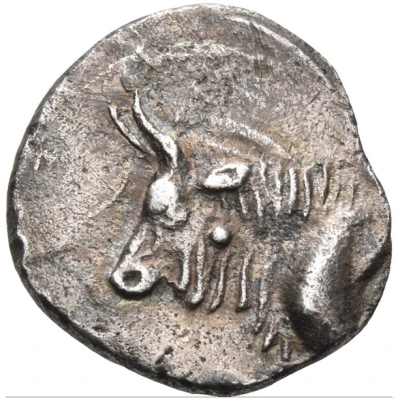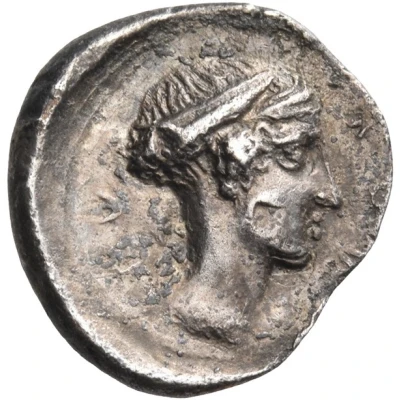


© Nomos AG
Hemidrachm 330 BC - 270 BC
| Silver | 2.88 g | 17.0 mm |
| Issuer | Gortyna (Crete (ancient)) |
|---|---|
| Type | Standard circulation coin |
| Years | 330 BC - 270 BC |
| Value | Hemidrachm (½) |
| Currency | Drachm |
| Composition | Silver |
| Weight | 2.88 g |
| Diameter | 17.0 mm |
| Shape | Round (irregular) |
| Technique | Hammered |
| Orientation | Variable alignment ↺ |
| Demonetized | Yes |
| Updated | 2024-10-10 |
| Numista | N#236631 |
|---|---|
| Rarity index | 97% |
Reverse
Diademed Head of Europa to right, with barley leaves above her forehead and wearing a simple earring
Script: Greek
Lettering: ΛOPTY ΝV
Comment
Imhoof-Blumer, Monnaies Grecques, 14; Svoronos, Numismatique 39 and pl. XIII, 13.
Interesting fact
The Hemidrachm coin from Gortyna, Crete, was used as a form of currency in ancient Greece during the Hellenistic period. Its name "Hemidrachm" means "half drachma," which refers to its value being half that of a standard drachma coin. Despite its relatively low value, the Hemidrachm was still made of silver, indicating the importance of silver in ancient Greek currency. Additionally, the coin's design featured the image of a bull, which was a symbol of strength and fertility in ancient Greek culture. Overall, the Hemidrachm coin from Gortyna, Crete, offers a fascinating glimpse into the economic and cultural practices of ancient Greece.